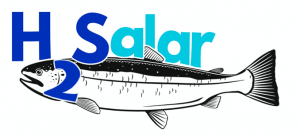Work Package 2
Molecular and mechanistic insights into exogenous H2S-host interactions
Leader: Nofima – Christian R. Karlsen
Here we will focus the functional studies on H2S-host interactions in mucosal tissues since they have the highest chance of first contact with H2S. For comparison and addressing the high risk involved in the focus on mucosal cells, we will perform parallel studies in the liver since it is a key organ in xenobiotic metabolism. Primary cell cultures will be used to characterise the underlying mechanisms of phenotypic and/or cytotoxic effects of H2S.
The primary epithelial cells of the gills and skin represent the barrier towards the environment and are considered important non-specific defenders of the host. Consequently, these cells are relevant as a model system for in vitro studies of tissue responses. How salmon cells respond to the presence of H2S in the environment is unknown.
We will provide mechanistic insight into this aspect using a bi-directional approach, starting first with an established H2S response-related gene in mammals then mine the microarray data in WP4 for potential markers in salmon. The genetic information will be further validated in a behavioural avoidance test.

